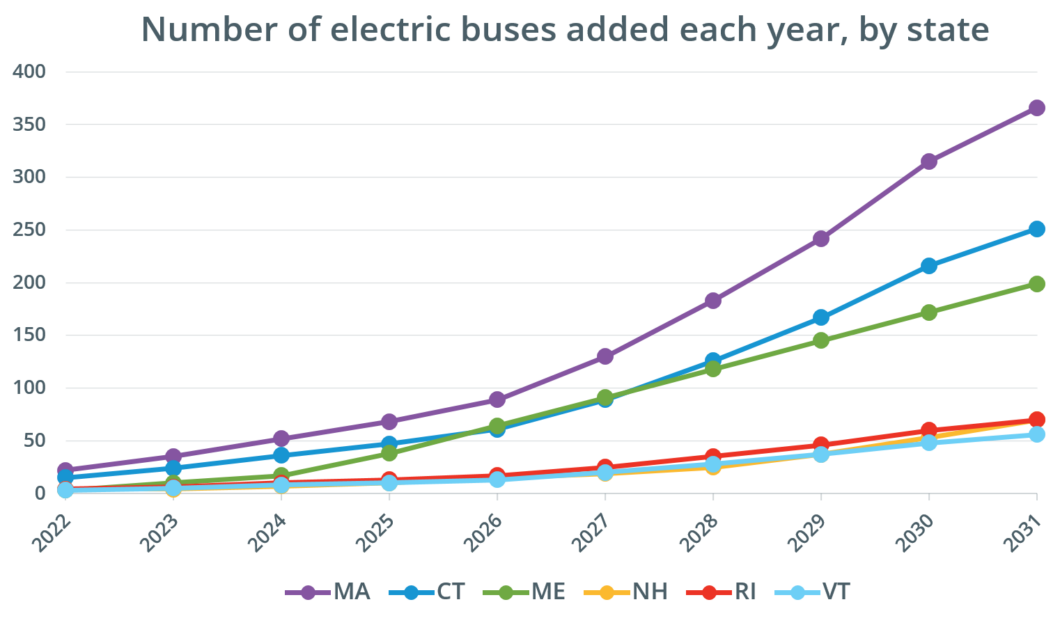School buses rolling toward electrification in ISO-NE transportation forecast

Of the buses carrying students back to school around New England this fall, only a handful are electric. That share is expected to change dramatically over the next decade as electric vehicles of all kinds find broader use in the region.
ISO New England’s 2022 Transportation Electrification Forecast includes projections for electric vehicle (EV) adoption in the six states through 2031, based on state policies, manufacturer announcements, and other data. As part of the ISO’s mission to plan for the future of the regional grid, the forecast looks at how much energy will be needed to keep EVs charged as well as what times of day EV charging will contribute most to demand for electricity. The transportation forecast provides data points that inform the ISO’s Forecast Report of Capacity, Energy, Loads, and Transmission (CELT), an annual snapshot and long-term outlook for the region’s power system published each spring.
Previous transportation forecasts examined only personal light-duty EVs. This year’s forecast, released in April, is the first to include projections for other types of EVs, including school and transit buses, medium-duty delivery trucks, and light-duty fleet vehicles (including sedans, minivans, SUVs, and pickups) like taxis, rideshares, and government vehicles. Personal vehicles are expected to make up the lion’s share of EVs throughout the forecast period.
As of March 31, 2021, there were 26,465 school buses in New England, and only 16 of them were electric. ISO New England projects 56 electric school buses in 2022. By 2031 that number is forecasted to grow to 4,149.

School buses account for only a small portion of EV growth and electricity demand over the next decade. By 2031, the forecast estimates, New England will have more than 1.5 million personal EVs (representing 14% of all vehicle stock) and about 57,278 electric vehicles in all other categories.
Annual energy use by EVs is expected to grow from about 78 gigawatt-hours this year to 5,934 GWh in 2031, according to the forecast. EVs are expected to contribute 1,096 megawatts to summer peak demand and 1,535 MW to winter peak demand by 2031.
Electric school buses have unique characteristics when it comes to grid demand. They won’t be used as often when schools are not in session, meaning they will be less of a factor in summer peak demand. They are more likely to affect winter peak demand.
School buses also charge at different times of day compared to many other EVs. Pickup and drop-off schedules mean school buses charge at midday and in the late afternoon, while personal EVs usually charge in the evening and delivery and transit vehicles tend to charge overnight.
Electricity will make the wheels on the bus go round and round. But auxiliary systems will be needed to heat the buses, as electricity alone can’t keep up with heating demand while powering the motor and other systems. So far there’s not much data on how best to do that, especially for colder climates. Solutions could include diesel fuel or heat pump systems.
- Categories
- Industry News & Developments
- Tags
- electrification, forecast



